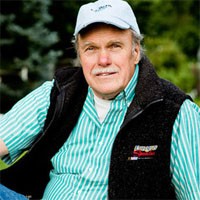Bob DeYoung: Patient Stories
“Within about two hours, he was in the ICU,” says Bob’s longtime companion, Beverly Lyon, blue eyes filled with concern. “They realized if they did not do something, he was going to die.” Something was terribly wrong — but what?
Earlier that fall, Bob mistakenly was told that he had hepatitis — or possibly polymyositis, a rare connective-tissue disease. Only after he entered the hospital did doctors detect cardiac irregularities that led them to the correct diagnosis — endocarditis, an inflammation that attacks the lining of the heart muscle and valves.

Nathan Segerson, MD, FHRS, a cardiologist and electrophysiology specialist at St. Michael Medical Center, solved the puzzle when he found “vegetative matter” — a sign of infection — on Bob’s aortic and mitral heart valves. The infection had entered Bob’s bloodstream and spread to his spleen.
“Jeez, I was scared,” Bob says, “because I didn’t know if I was going to come out of this or not.” Neither did his doctors. Clearly, the infected valves had to go, but Bob was too weak for surgery. Bev recalls the cardiothoracic surgeon clearly spelling out the situation. “If you want to live,” he told Bob, “then we have to build you up so you can withstand surgery — or at least your odds are better.”
Bob underwent three weeks of tube feeding and began an intravenous drip of high-dose antibiotics. By Dec. 22, 2009, he was stronger, but fluid was filling his lungs, creating a risk of pneumonia. It was time to operate. Bob had the choice to have his surgery at the University of Washington, but said no. “Bob said he believed in Dr. Reed’s skill and in the care he was getting and the relationships he had forged at Harrison,” Bev says. “He wanted to stay here.”
The five-hour surgery came in the nick of time. One of Bob’s valves was so damaged, it crumbled in the surgeon’s hands. Bob received two mechanical valves, which started up as smoothly as a finely tuned Bentley.
During the next six months, Bob had regained most of his strength. Neatly built, with a white mustache and eyes that twinkle under his billed cap, he was back to fishing on Mission Lake by summer, just steps from his blue lakefront cottage. He and Bev tour vintage-car shows and are hand-pouring a concrete floor for Bob’s personal auto “museum.”
His illness cost him 62 days in the hospital, including two weeks of inpatient rehabilitation in Tacoma. But he cheerfully — gratefully — describes the bonds he forged with the dedicated nurses. “I can’t believe the care I got,” said Bob, who’s ebullient about the road ahead. “You learn to enjoy every day.”
